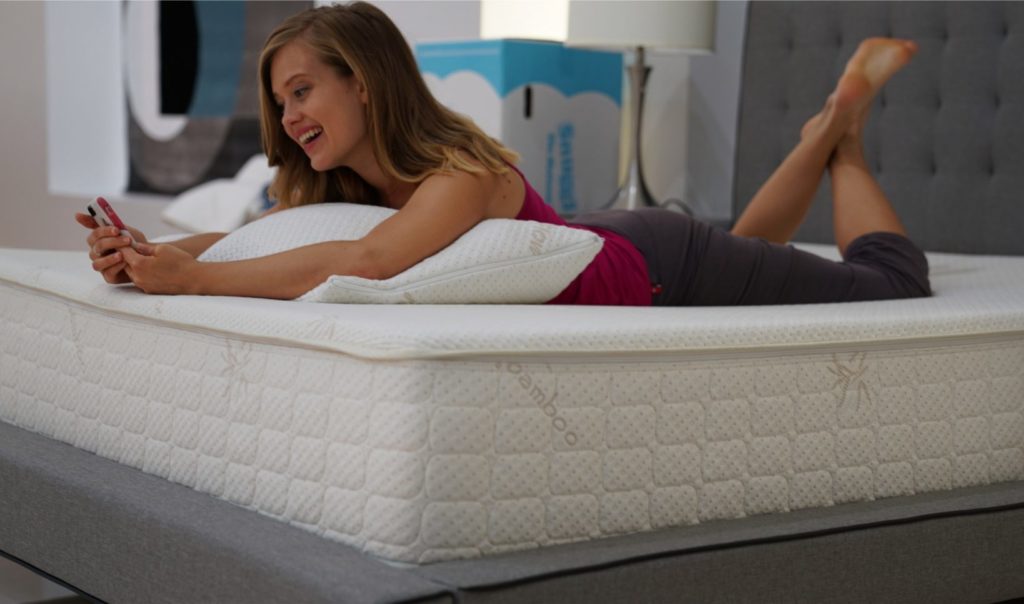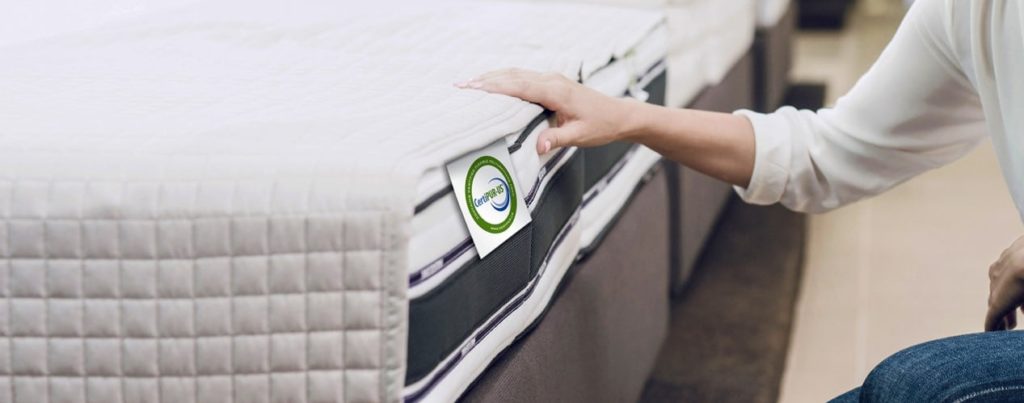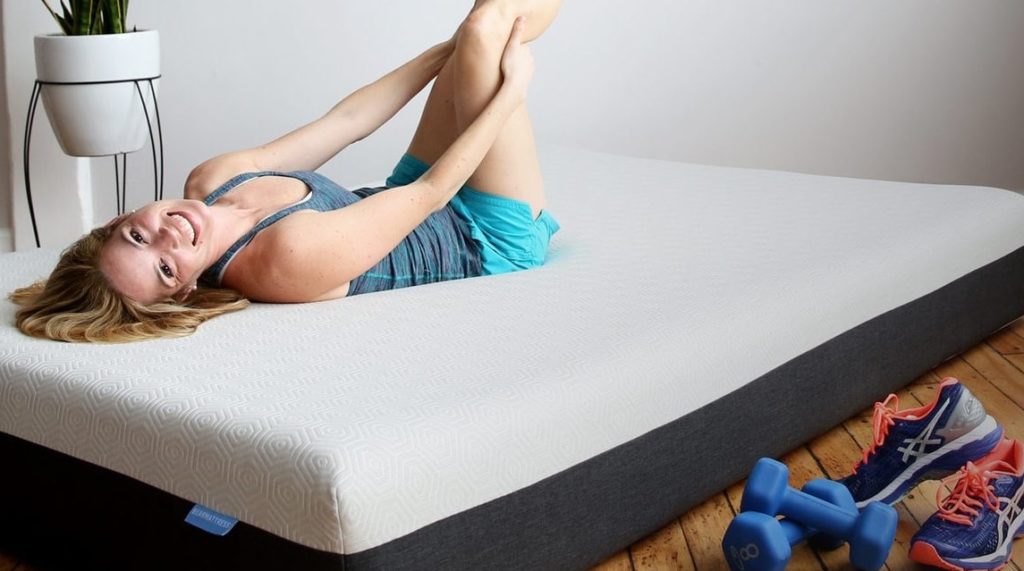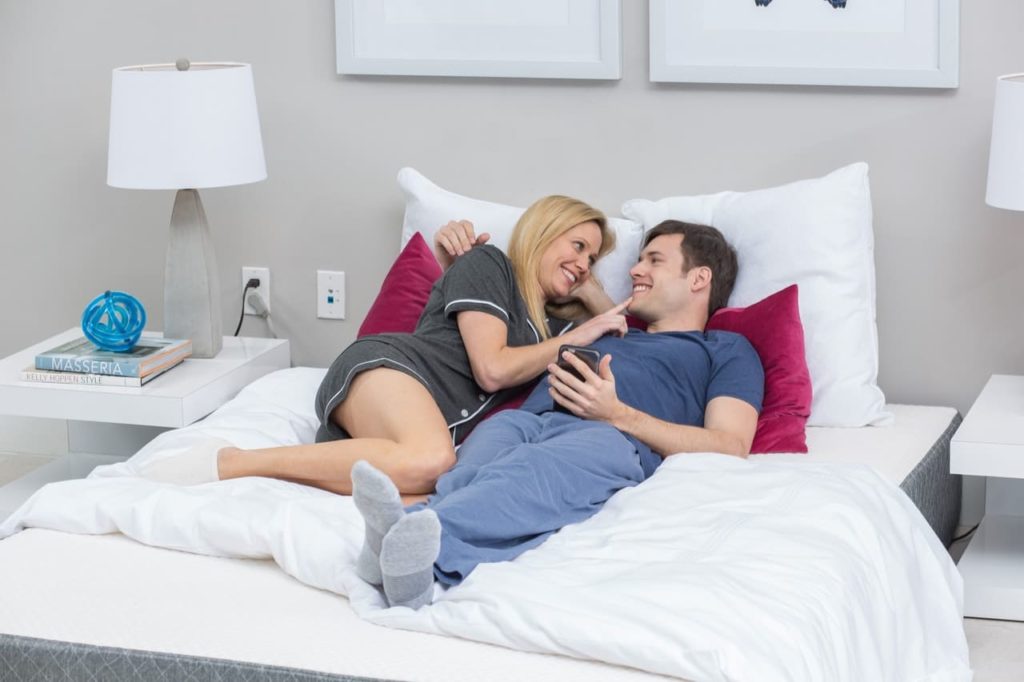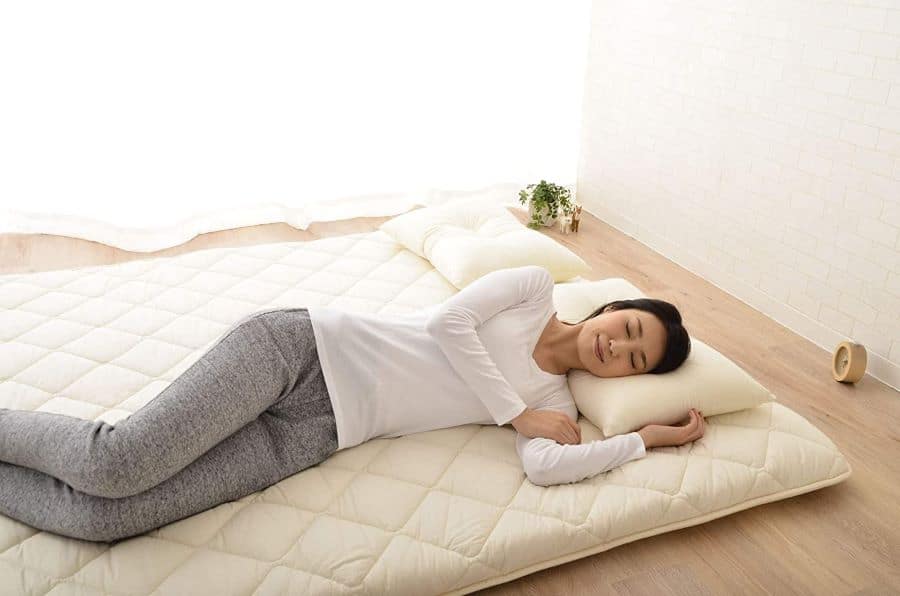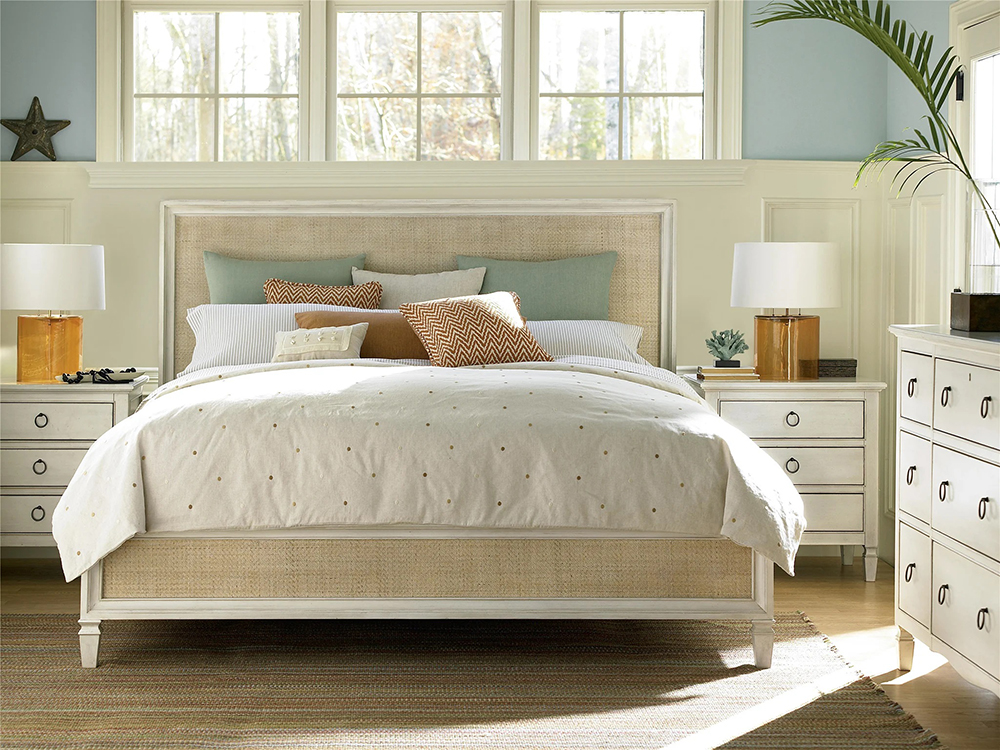


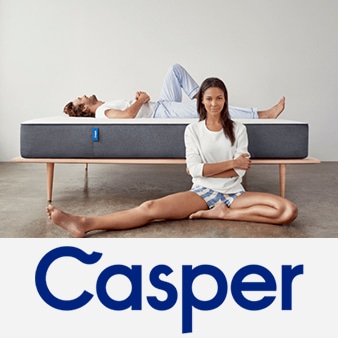
Foam mattresses have improved in their construction due to new technology and as such no longer play second fiddle to those made with springs. It, therefore, falls to reason that some of you will choose the former for your sleeping needs. However, that is only one half of the decision. Deciding which manufacturer to go with may also need a bit of deliberation. This is why the & Needle vs Casper comparison makes sense. Both of these mattresses are manufactured and sold mainly in the United States and are therefore competing for the same market.
The two use different types of foam in their construction and thus may offer a different sleeping experience. Besides that, the sizes they ship in differ. Similarities are also quite a number, and they may make the selection process quite challenging. It, therefore, falls to you to check the pros and cons of each so that you make a better decision for your needs. Nevertheless, in the Tuft & Needle vs Casper battle, you have to choose a winner.
Tuft & Needle is a company based in Phoenix, Arizona and was co-founded by John-Thomas Marino and Daehee Park. It also falls under the umbrella of the Serta Simmons Bedding Company along with a few other mattress brands. At the moment, T&N offers two types of mattresses: the original mattress on review and the mint mattress.
The original has been on offer since the inception of the company sometime in the year 2012 and is priced cheaper than both the later mint version and the Casper. The mint is an improvement in every sense on the original:
The full polyurethane foam which makes up both mattresses is also often bouncier in its feel. However, only the original is one review here.
Casper is arguably a more prominent company than T&N despite being founded almost two years later. The company is also more evenly spread out with a few showrooms in different cities in the US. There are two other beds on offer by the same manufacturer, and that is the Casper Wave and the Casper Essential. On paper, this installation features a 12” thickness for the queen bed which tops the 10 inches offered by the Tuft & Needle. This, however, is not to be taken to mean it makes for a better mattress. Bigger isn’t always better. The wave and essential are in 13” and 11” sizes, respectively.
Looking at the Casper and Tuft & Needle beds, the levels of firmness are similar. They also claim to offer the same benefits, which include a comfortable, cool sleep. The most significant disparity perhaps falls in the price at which both installations are sold. The T&N falls at almost half of what the Casper sells at. However, is the money you save worth it?
| Tuft & Needle | Casper |
|
|
| VIEW ON AMAZON | VIEW ON AMAZON |
| Lull | Tuft & Needle | |
| Type | Foam | Foam |
| Firmness | Medium firm (6.5) | Medium firm (6.5) |
| Thickness | 10″ | 10″ |
| Weight | 71 lbs | 71 lbs |
| Sleep trial | 100 nights | 100 nights |
| Warranty | 10 years | 10 years |
| Price | $800 (Queen) | $595 (Queen) |
| Certification | CertiPUR-US
Sustainable Furnishing Council® Member Mattress Recycling Council® Member |
Greenguard Gold
Standard 100 by OEKO-TEX Certi-PUR-US |
| Tuft & Needle | Casper | |
| Support core | 7″ 1.8 PCF HD polyfoam | 7″ 1.8 PCF HD Polyfoam |
| Comfort Layers | 3″ 2.8 PCF polyfoam | 1.5″pPolyfoam 1.5″ 4 PCF memory foam 1.5″ latex-like foam |
| Cover | Micro polyamide and polyester | Polyester |
When either of these two mattresses arrives at your doorstep, it will probably be in a box. After that, it is likely that there will be an odor to them during the unpacking process. This smell is not constant, and in a well-ventilated room will be gone in about three days. Also, since the packing boxes are small, you can allow the mattress some time to expand and inflate to its full size before sleeping on it.
Both these mattresses have a firmness rating of 6.5, which is medium firmness despite the differences in construction. However, with the T&N being 2 inches smaller in height, there is the use of less material, and thus there is a resulting difference where weight is concerned. The 14 lbs extra weight difference may be inconsequential to some while to others it may prove an inconvenience.
The T&N being all polyfoam in the comfort layers will provide more bounce. Also, the more weight you put on it, the more support it gives. As to sinking into the mattress, this is not something you have to worry about. In essence, the bed will mold itself to your frame depending on which parts of your body hold the most weight making it more comfortable. The graphite is quite an ingenious idea in that it sucks the heat in your bed and together with the cooling gel, helps to dissipate it. Nights where you break into a sweat on your bed may altogether be a thing of the past. The comfort of sleeping cool may also be a welcome change.
Once you get to the Casper mattress, you will notice that the design is more deliberate. Shoulders and hips are a huge consideration, especially for people who sleep on their sides. There is softer foam under the shoulders, and that will help you sink a little more in that area. Also, the foam under your hips is firmer. Overall this design innovation is meant to aid your back to straighten out while you are asleep. Therefore, this mattress is more comfortable and therapeutic for your spine.
As mentioned earlier, the T&N alongside the Casper have the same firmness rating, and this may be because the support layers for the two mattresses are made of the same material. The dimensions of the support layers are identical, as well. The Casper is firmer under your hips than it is in the shoulder area. However, on the other side of the divide, firmness is uniform on the surface of the whole mattress where Tuft & Needle is concerned.
The T&N manufacturers have outdone themselves coming up with innovative ideas specifically to manage this area. The first measure used in temperature control is the incorporation of graphite in the mattress. Due to its conductive abilities, it helps to transfer heat from the user’s body into the bed.
Already, that helps to reduce the heat that the user is feeling, but without a place for the heat to go, it would build up and eventually get back to the person occupying the bed. Next comes the cooling gel. The heat is dissipated by coming into contact with the cooling gel, ensuring no residual warmth is left to antagonize the mattress user. The result is that the temperature is regulated for the whole night.
On the other hand, stands the Casper who have incorporated an open cell layer at the top of the mattress. The result is increased airflow that moves from the top of the bed where someone is sleeping through the middle and out the side. It is not as innovative or as effective as the technology used in the T&N, but it gets the job done.
Sleeping partners are also a consideration in the making of foam mattresses. If not controlled, partners are likely to awake when you move around in your sleep. The Tuft & Needle manufacturer is aware of this and as such, has provided a localized bounce for sleeping parties. This means what one person does will only affect the mattress part that they are sleeping on while the rest of the mattress remains perfectly still.
The Casper on the other end uses memory foam on its second layer, and that helps with motion isolation. The result is the same: Most of what one person does on the mattress will be localized to the area they are sleeping on, and thus, sleeping partners will not disturb each other in their sleep.
Casper have designed a way for the users not to feel the different layers used in the making of the mattress. Where you would feel that you were sinking into a lower layer of the bed, the Casper makes this transition seem seamless. You are also likely to feel a higher rate of responsiveness on the shoulder area, given that the foam in that area is softer than you would the rest of the bed. Contrast that with the T&N bed where there are similar levels of support, bounce, and responsiveness throughout the mattress. It comes down to preference here and what the user is most comfortable with.
Polyfoam has a reputation for more bounce than memory foam and forms the whole body of the T&N mattress. On the other hand, the Casper mattress includes components of both memory foam and latex-like foam. However, at the base of it all is a support layer of 7” 1.8 PCF HD polyfoam the same as the one in the Tuft & Needle. What you then expect from these two are almost similar amounts of resilience with a slight variation due to differences in size. The bounce may also be less in the Casper, but that margin would be negligible to the point of not making a difference for most buyers.
For both mattresses, edge support seems to have been forgotten. The edges are the same in construction as you find in the middle of the bed. Nonetheless, most people don’t consider this to be a deciding factor in whether or not they buy a mattress. If however, you do, then neither of these mattresses may be the one for you.
Once you receive the package, it will probably be in a small shipping box, and thus the mattress will have been squeezed in. It, therefore, needs time to expand to full size. Also advisable is that while you give the mattress time to expand you should also store it in a well-ventilated area to allow the smell that may be emanating from the mattress to dissipate. However, the gases emanating from the mattresses are not harmful, albeit they may be annoying and unpleasant. This whole process should take less than 72 hours for both beds.
| SLEEP POSITION | Light sleepers(less than 130 lbs) | Average sleepers(130 lbs to 230 lbs) | Heavy sleepers(greater than 230 lbs) |
| Tuft & Needle | |||
| Side | 6 | 8 | 7 |
| Back | 9 | 8 | 8 |
| Stomach | 6 | 7 | 7 |
| Casper | |||
| Side | 10 | 10 | 8 |
| Back | 10 | 9 | 8 |
| Stomach | 8 | 8 | 7* |
* Out of 10
The above table highlights the sleep position ratings for people of different sizes and weights. As you can see, two inches of height don’t make much of a difference for heavy sleepers. The T&N bed performs even better with heavy sleepers than does the Casper. Overall the Casper is a better performer for more sleeping positions along with more types of people. Nevertheless, both mattresses don’t perform well with people who prefer sleeping on their stomachs.
We should also mention that it is not advisable for people to sleep on their stomachs. Sleeping on your side or your back with both of these mattresses offers you the opportunity to align your spine to the best possible position. This makes taking care of your back easier. However, sleeping on your stomach doesn’t do the same. The above table also mentions the different weight categories people belong to, and you can thus use it to determine which mattress would be better suited for your comfort.
| SIZE | Tuft & Needle | Casper |
| Twin | $350 | $595 |
| Twin XL | $395 | $695 |
| Full | $495 | $895 |
| Queen | $595 | $1,095 |
| King | $750 | $1,395 |
| California King | $750 | $1,395 |
| Sleep trial | Warranty and refund | Delivery | ||
| Tuft & Needle | 100 nights | 10-year warranty | Full refund | Within the U.S. |
| Casper | 100 days | 10-year warranty | Full refund (minus shipping) | Within the U.S. and Canada |
Casper has a broader range of customers as it can deliver to both the US and Canada. With both mattresses, you have about 100 days after delivery to get a feel for the product and decide if you want to keep it. If you don’t, you can return the bed to the vendor and get a refund. In addition to that, you get the industry standard of a 10-year limited warranty. With this, the products start to differ in that the T&N will offer a full refund without any charges. On the other hand, the Casper will charge you for shipping back the product, which is still a pretty good deal.
Also, with Tuft & Needle mattresses, some of the returns don’t go back to the manufacturer. Instead, they are donated to charity with the buyer still getting the refund they were promised.
Pros
Cons
Pros
Cons
If your only consideration is the budget for your mattress, then the decision becomes a no brainer. Nevertheless, making this decision is harder and often requires you to consider multiple factors together to see how you can get the most benefits and decide between Tuft & Needle vs Casper. That includes price, size, temperature control, motion transfer, and the few other factors we mentioned above. Of course, if you live in Canada, only one of these products ships to your locale. Once you have found a suitable compromise, you can go ahead and purchase the mattress of choice.
